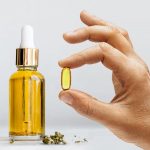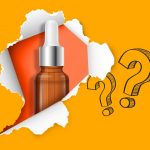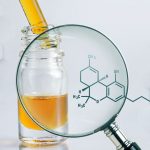Over the last few years, cannabidiol (CBD) has taken the health and wellness world by the storm. Now, there are dozens of different CBD products available, from the classic tinctures and capsules to CBD gummy bears and CBD lattes.
Of course, it’s easy to get lost in this abundance of options, so we decided to make this comprehensive CBD guide to help you out.
Here’s everything you should know about CBD, starting with the most fundamental question.
What is CBD?
Cannabidiol (CBD) is the main active compound of cannabis, making up to 40% of the plant’s extract. CBD does not have any psychoactive properties whatsoever and is currently being researched for its potential medical use.
Although CBD was discovered way back in 1940, the medical and scientific community hasn’t been very interested in this compound over the last few decades. However, it’s become a hot topic recently and now there are over 2000 studies on the subject of CBD listed in the PubMed database, and dozens of other trials are under way.
Is CBD legal in the US?
Generally speaking, hemp CBD is legal at a federal level since the passing of the Farm Bill in December 2018. This encompasses all kinds of CBD products regardless of their form or dosage (CBD content), as long as they are produced specifically from hemp and not marijuana and contain less than 0.3% THC.
While hemp-derived CBD is legal all around the US, CBD derived from marijuana is legal only in the ten states that have approved the use of this plant both for medical and recreational purposes:
- Alaska
- California
- Colorado
- Maine
- Massachusetts
- Michigan
- Nevada
- Oregon
- Vermont
- Washington
However, it’s important to understand that the legislation around all cannabinoids (including CBD) differs greatly from one state to another. So, although CBD is federally legal, if you have any concerns or doubts about how your state approaches this matter—it’s always wise to double-check your local laws. The three US states famous for their exceptional restrictions regarding everything related to cannabis in general are South Dakota, Idaho, and Nebraska.
CBD vs THC
Both cannabidiol (CBD) and tetrahydrocannabinol (THC) are cannabinoids derived from the Cannabis sativa plant (commonly referred to as cannabis), but that’s one of the only features they have in common. In all other aspects, these two substances are extremely different from one another.
- CBD doesn’t have any psychoactive (mind-altering) effects, contrary to THC. In fact, THC is the specific chemical that triggers the ”high” that marijuana provides. You can’t get high on CBD, and this is an important thing to understand.
- CBD is industrially extracted from hemp, a special variety of cannabis that is extremely low in THC (the standard is less than 0.3% for US hemp). THC is usually extracted from marijuana, a cannabis variety that’s rich in this specific compound.
- You cannot overdose on CBD. High doses of THC often lead to unpleasant side effects like nausea, vomiting, and temporary paranoia.
How does CBD work?
To understand how CBD works, let’s take a quick look at the human physiology.
The human body has a class of receptors and signaling molecules collectively referred to as the endocannabinoid system (ECS). The ECS is expressed primarily in the nervous system (brain, spinal cord, peripheral nerves) and works through the action of cannabinoids—molecules that interact with cannabinoid receptors.
Some cannabinoids are produced in the body (like anandamide) while others are naturally found in plants. The latter are called phytocannabinoids, and CBD is one of them.
There are two kinds of cannabinoid receptors in the ECS, named CB1 and CB2.
CB1 receptors are present mainly throughout the central nervous system, while CB2 are abundantly scattered all around the tissues of the body. For instance, they can be found in the peripheral nervous system, the liver, the immune system, muscle cells, the lining of blood vessels, and so on.
Using these two receptors and cannabinoid signaling molecules, the human body fine-tunes its metabolism and keeps its homeostasis (the inner equilibrium of all physiological processes) well-balanced.
As to how CBD works specifically, there is no universal opinion on the matter. At the moment, the common thought is that CBD tweaks the sensitivity and density of cannabinoid receptors, as well as enhances the sensitivity of serotonin receptors. Serotonin is one of the body’s “feel good hormones”, and this explains why many people use CBD as a way to soothe anxiety and improve their mood.
What’s the best way to take CBD?
CBD is freely available in a wide range of forms for everyone to choose, but the most popular and convenient forms are CBD capsules and CBD tinctures.
Capsules are discreet and easy to take, compared to any form of liquid CBD that can be potentially spilled, for example. CBD capsules also maintain the purity of the dose, eliminating the risk of dilution or contamination with impurities.
CBD tinctures are another good option, primarily because some people have trouble taking capsules or just don’t like doing so but most find taking CBD in liquid form easy. Many people also report that CBD tinctures work somewhat faster, allowing you to tweak the dosage in a more effective manner.
In the end, both options are premium-grade as the dosage in both can be easily controlled and delivered as intended, contrary to many other forms of CBD products. Choosing between capsules and tinctures is mostly a matter of personal preference.
What is the optimal dosage of CBD?
It’s important to understand that there is no magical formula for defining your optimal CBD dosage, as it depends on a multitude of factors like:
- Body weight
- Age and sex
- Metabolism rate
- Body temperature
- General health status
- Physical activity level
Moreover, one’s optimal dosage can easily become too weak or too powerful, depending on the above-mentioned factors.
A good starting point is a single daily dose of 2 mg of cannabidiol per 10 lb of body weight. After calculating your starting dose, take it daily for about 3-5 days. Listen carefully to your body during this period, or even journal your experience to better control your dosage.
If you are not satisfied with the effects by the end of the 5th day, start taking an identical daily dose—resulting in 2 identical CBD doses per day. Again, give yourself 3-5 days to get used to the new dose and evaluate its effect on your health.
While it is technically impossible to overdose on CBD, we still recommend regulating your dosage step by step, gently, over the course of several 3 to 5-day periods, just to give your body enough time to incorporate CBD into its normal metabolism.
Isolate, Full Spectrum and Broad Spectrum CBD
Another thing to consider when buying and taking CBD products is that they are available in three forms: isolate, full spectrum, and broad spectrum CBD.
CBD isolate is the purest form of CBD available, meaning that a CBD isolate product contains just the CBD and a carrier base—like an oil or any other liquid. Such products offer all the potential benefits of CBD but miss on the other healthy compounds of the cannabis plant like flavonoids, terpenes, minor cannabinoids, and other phytochemicals.
Full spectrum CBD is the direct opposite of CBD isolate: it contains all the phytochemicals featured in the source plant, including CBD and, as it often happens, THC. Although the THC content in such products isn’t high enough to cause any serious psychoactive effects, it’s still important to know what you are buying and taking—especially since legislation around THC is much more restricted than CBD.
Broad spectrum CBD is like a hybrid between the two previous kinds, as it features all the healthy compounds of hemp including CBD, cannabis terpenoids and flavonoids, but does NOT contain THC. These CBD products allow getting as much of the potential benefits allegedly associated with cannabidiol without the potential effects of THC. Of course, this kind of CBD products is also legal nationwide since it doesn’t contain tetrahydrocannabinol.
Here at Vida+, we sell exclusively broad spectrum CBD to provide our customers with premium-quality products without the needless potential THC side effects or legal worries.
Third-party lab results
Another major thing to consider is whether the CBD product of your choice has been lab-tested to ensure its purity, quality, and potency. Not all CBD manufacturers and sellers go through the trouble of this step in the production process, and such an attitude may result in a sub-optimal or even outright unpleasant customer experience with cannabidiol.
We take pride in the quality of our product and our testing of it, and that’s why all Vida+ products are routinely tested in world-class independent laboratories to ensure consistent quality, outstanding purity, and confirmed potency of each item.
Conclusion
Congratulations, now you are educated on the matter of cannabidiol and can make a fully informed decision on which CBD product to buy and take.
In any case, remember that the most important thing to track is how you feel when taking the product of your choice. Since CBD usually has a fairly gentle action that differs greatly from one person to another, your experience with this compound will be unique regardless of what specific product you pick in the end. Start slowly, progress carefully, and enjoy the results!








